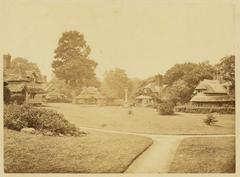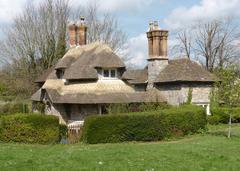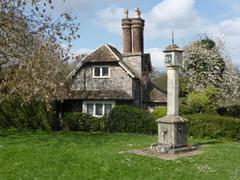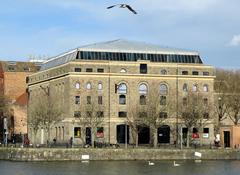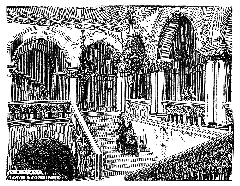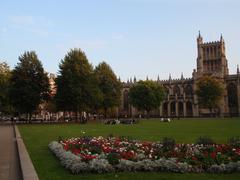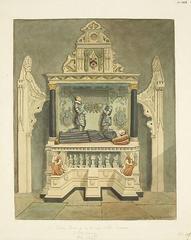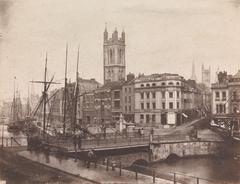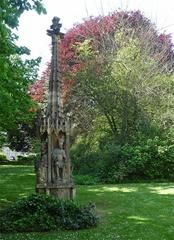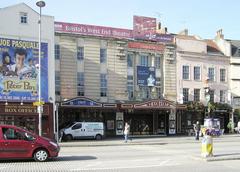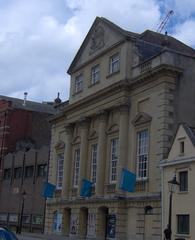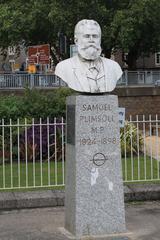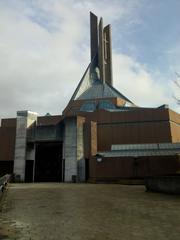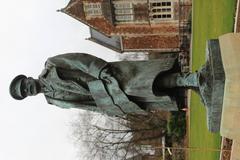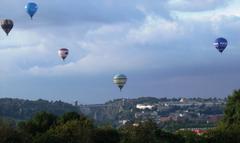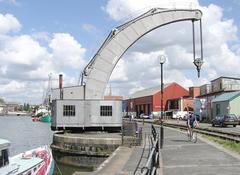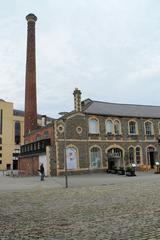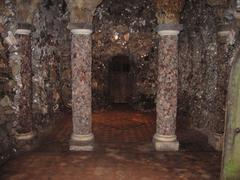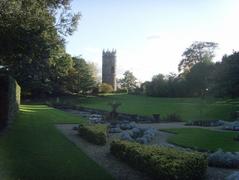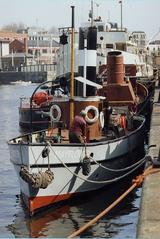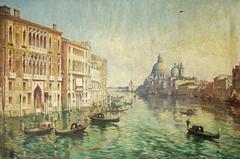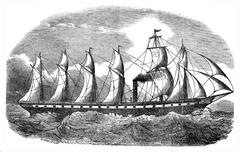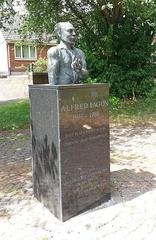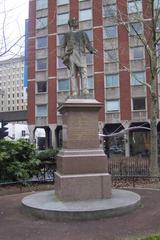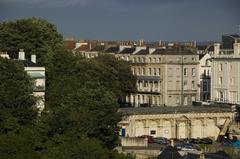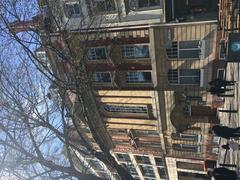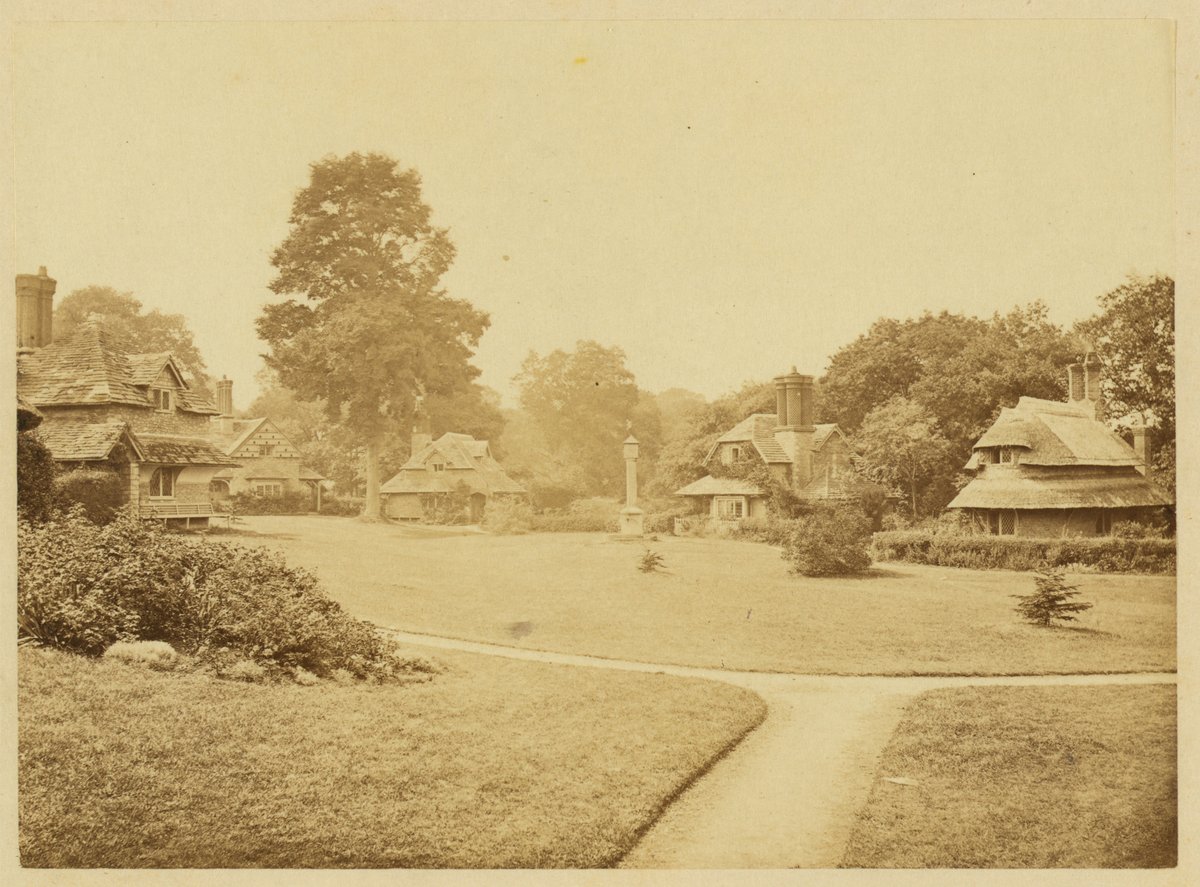
Blaise Hamlet Bristol: Visiting Hours, Tickets & Historical Guide
Date: 15/06/2025
Introduction
Blaise Hamlet, located on the northern edge of Bristol, is a celebrated example of early 19th-century architectural innovation and social philanthropy. Conceived in 1811 by architect John Nash under the patronage of Quaker banker John Scandrett Harford, this cluster of nine cottages was designed to provide dignified retirement homes for estate workers. Today, Blaise Hamlet stands as one of Britain’s earliest garden suburbs and a quintessential expression of the Picturesque movement, blending harmonious design with its natural setting. Managed by the National Trust, it remains a living community while welcoming visitors to its tranquil green and historic surroundings. This guide offers an in-depth look at Blaise Hamlet’s history, architectural significance, visitor information, accessibility, nearby attractions, and practical travel tips to help you plan your visit (National Trust, CityDays, Bristol Post).
Contents
- Introduction
- Historical Background
- Early Origins & The Blaise Estate
- The Harford Family’s Philanthropic Vision
- Conception & Construction of Blaise Hamlet
- Architectural Significance & the Picturesque Movement
- Social Impact & Legacy
- Preservation & Modern Status
- Visitor Information
- Visiting Hours & Tickets
- Accessibility
- Travel Tips & Nearby Attractions
- Guided Tours & Photographic Spots
- Practical Visitor Tips
- FAQ
- Conclusion
- Call to Action
Historical Background
Early Origins & The Blaise Estate
The area now known as Blaise Hamlet has a rich history, with archaeological evidence of Neolithic, Bronze Age, and Iron Age settlements. The discovery of a Roman villa nearby further highlights its longstanding significance (History Tools). The estate is named after a medieval chapel dedicated to Saint Blaise, which served the local community until its demolition in the 18th century. During the English Civil War, the estate’s proximity to Bristol—a Royalist stronghold—made it strategically important (History Tools).
The Harford Family’s Philanthropic Vision
In 1789, John Scandrett Harford purchased the Blaise Estate. Renowned for his progressive social values, Harford commissioned William Paty to build a neoclassical house, completed in 1798, and invited famed landscape designer Humphry Repton to enhance the grounds (History Tools). Harford’s philanthropic initiative led to the creation of Blaise Hamlet, providing dignified retirement homes for his estate workers (Town and Village Guide).
Conception & Construction
In 1811, Harford commissioned architect John Nash, celebrated for his Picturesque style, to design a set of retirement cottages on the estate’s edge (Wikipedia). Nash’s vision, realized with the assistance of George Repton (Humphry Repton’s son), resulted in nine unique cottages arranged around a central green. Each cottage is distinct in appearance, yet together they form a harmonious whole—an early model for garden suburbs and social housing (Wikipedia).
Architectural Significance & The Picturesque Movement
Blaise Hamlet is acclaimed as the “ne plus ultra of picturesque layout and design,” according to historian Nikolaus Pevsner (Wikipedia). The Picturesque movement, introduced by William Gilpin in the late 18th century, emphasized the harmonious integration of architecture and landscape. Each cottage at Blaise Hamlet features unique elements such as tall chimneys, thatched or tiled roofs, pointed Gothic arches, and intricately detailed gardens (Town and Village Guide). The arrangement of the cottages around an oval green creates a sense of natural evolution rather than rigid planning (Wikipedia).
Social Impact & Legacy
Blaise Hamlet was groundbreaking in its approach to workers’ welfare, offering comfortable, aesthetically pleasing homes in a community setting. This model predated the wider adoption of social housing and garden suburbs by several decades and influenced future developments in humane and functional residential design (Wikipedia). The communal green, intended for social interaction, reflects the Quaker values of community and mutual support.
Preservation & Modern Status
Gifted to the National Trust in 1943, Blaise Hamlet’s cottages were designated Grade I listed buildings in 1959, while the green and sundial are Grade II* listed (Wikipedia). The cottages remain privately occupied, though the National Trust has restored their exteriors while modernizing interiors for contemporary living (Bristol Post). The hamlet’s enduring storybook charm continues to inspire visitors and has been likened to settings from fantasy literature (Bristol Post).
Visitor Information
Location & Getting There
Blaise Hamlet is situated in Henbury, Bristol, at Hallen Road, BS10 7QY (National Trust - Blaise Hamlet). Access is via a gate in the east boundary wall, followed by a short path to the green (Real Girls Wobble). Parking is available at Blaise Castle Estate car park, and local buses serve the Henbury area (Bristol Post).
Visiting Hours & Tickets
- Opening Hours: The hamlet green is open daily from around 9:00 a.m. until dusk. There are no set closing times, but it is best visited during daylight hours. Seasonal variations may apply; always check the National Trust website for up-to-date information.
- Admission: Entry to the hamlet green is free; no tickets are required. The cottages are private residences and not open for interior tours.
Accessibility
- Paths: The terrain is mostly level but includes cobbled and gravel paths, which may be uneven. Wheelchair users may face challenges at the entrance steps.
- Parking: Accessible parking is available at Blaise Castle Estate car park.
- Assistance: No staff are based on-site; for specific needs, contact the National Trust in advance.
Facilities & Amenities
- Toilets: Available at the Blaise Castle Estate car park and museum.
- Food & Drink: No cafés in the hamlet, but options are available nearby, including the Blaise Inn and Blaise Community Garden café.
- Seating: Benches are provided around the green.
Attractions & Activities
Architectural Highlights
Each cottage is unique, featuring a mix of thatched and tiled roofs, tall chimneys, and decorative details—a delight for architecture enthusiasts and photographers.
Village Green
The central green includes a Grade I listed sundial and historic water pump, ideal for photographs and relaxation.
Blaise Castle Estate & Museum
- Estate: 650 acres of parkland, woodland walks, and trails.
- Museum: Local history exhibits in Blaise Castle House (Blaise Castle Museum).
- Castle Ruins: A Gothic Revival folly offering panoramic views.
- Roman Villa: Site of Bristol’s only Roman baths.
Nearby Amenities
Dining options, shops, and additional attractions are found in Henbury and Westbury-on-Trym. Accommodation is available at local hotels and guesthouses (Real Girls Wobble).
Practical Visitor Tips
- Duration: Allow 20–30 minutes for the hamlet itself; combine with a visit to the estate or museum for a longer day out.
- Footwear: Wear comfortable shoes for cobbled and gravel paths.
- Weather: Check forecasts before visiting.
- Dogs: Permitted on leads; please clean up after them.
- Etiquette: Stay on public paths, respect residents’ privacy, and avoid entering private gardens or taking intrusive photos.
Guided Tours & Photography
While the cottages are not open to the public, guided walks of Blaise Castle Estate sometimes include insights into Blaise Hamlet’s history and design. The green, sundial, and pump are excellent spots for photography, especially in spring and summer.
Frequently Asked Questions (FAQ)
Q: Do I need tickets to visit Blaise Hamlet?
A: No, entry to the hamlet green is free of charge.
Q: What are the opening hours?
A: Open daily during daylight hours. Check the National Trust website for seasonal updates.
Q: Are there guided tours?
A: Occasionally, by prior arrangement. Consult the National Trust for details.
Q: Is Blaise Hamlet wheelchair accessible?
A: The site is mostly level but includes some uneven paths and steps at the entrance.
Q: Can I enter the cottages?
A: No, the cottages are private residences; visitors are welcome to view them from the green only.
Q: Are dogs allowed?
A: Yes, dogs are welcome on leads.
Conclusion
Blaise Hamlet is a unique blend of architectural artistry, social philanthropy, and landscape design. Its creation as a retirement village for estate workers set a precedent for future residential planning, while its storybook charm continues to delight visitors. As a Grade I listed site managed by the National Trust, Blaise Hamlet remains an essential destination for anyone interested in Bristol’s heritage, the Picturesque movement, or the evolution of social housing. Plan your visit by checking the latest information, and consider exploring the wider Blaise Castle Estate for a full day of historical and scenic discovery (National Trust, Historic England, Bristol Post).
Call to Action
Make the most of your trip by downloading the Audiala app for curated audio guides, maps, and updates on Bristol’s historical sites. Stay connected via our social media for the latest news, or check out related guides to further enrich your visit.
Sources and Further Reading
- Unveiling the Timeless Treasures of Blaise Castle Museum and Estate, History Tools
- Blaise Hamlet: Bristol’s Medieval Cottages, Bristol Post
- Blaise Hamlet, Wikipedia
- Blaise Hamlet: Visiting Hours, Tickets, and Architectural Significance, CityDays
- National Trust - Blaise Castle House and Estate
- Blaise Hamlet Listing Entry, Historic England
- Blaise Estate Visitor Guide, Real Girls Wobble
- 25 Best Things to Do in Bristol, The Crazy Tourist
